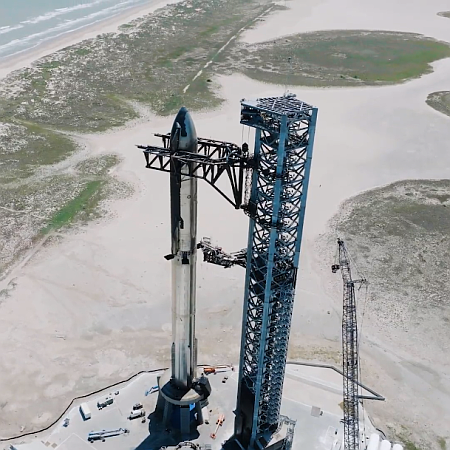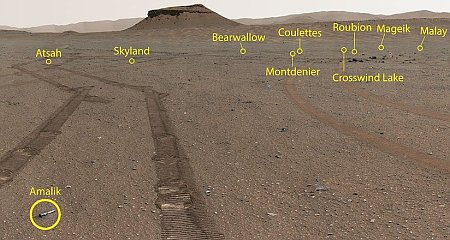House committee delays vote on commercial space bill due to new White House proposal
Because of the sudden announcement by the White House of its own version of a new commercial regulatory space bill, the House Science committee was forced to delay the voting on November 15, 2023 of its own new commercial space bill, put forth by Republicans.
The committee met Nov. 15 to mark up the Commercial Space Act of 2023 and one other bill. At the end of the markup, lasting more than three and a half hours including a recess, the committee’s chairman, Frank Lucas (R-Okla.) said the committee would delay votes to advance both bills until after the Thanksgiving break because of votes on the House floor and “and the nature of additional information that has become available to us.”
The latter comment appeared to be a reference to a legislative proposal released by the White House’s National Space Council less than an hour before the markup regarding a mission authorization concept for new space activities. That proposal would establish a system where both the Commerce Department and the Transportation Department would oversee activities not regulated today, based on the type of activity.
The House bill, introduced Nov. 2 by Lucas and space subcommittee chairman Rep. Brian Babin (R-Texas), would create its own mission authorization system at the Commerce Department. It would also direct Commerce to hand over responsibility for a civil space traffic coordination system to a consortium led by an academic or nonprofit organization, rather than keeping it within the Office of Space Commerce as currently planned. Lucas, in his opening remarks, said he was aware of the new White House proposal but has reservations about it. “These proposals, I fear, simply go in the wrong direction and hurt rather than support America’s space industry,” he said.
Both bills were aimed at realigning the regulatory regime governing private space activities. The House bill’s final form apparently had been written with a lot of industry input. The White House bill, supported by Democrats, appears designed instead to clamp down on commercial space by allowing the federal bureaucracy to regulate everything.
Both bills unfortunately give too much power to the federal government, though the Republican bill at least tries to shift some of that power to the private sector, where it belongs.
One of the main reasons we have had a rennaisance in commercial space in the past decade is that there has been little regulation. The private sector has been left to regulate itself, and it has generally done so very successfully because of the invisible hand of free market forces. Build things right and the world beats a path to your door. Do it badly and no regulation is needed, you go out of business.
Modern Americans no longer trust these fundamentals of freedom and capitalism, and so we have a rush by government to establish “rules,” none of which will really accomplish anything but slow development and innovation and squelch this emerging industry.
Because of the sudden announcement by the White House of its own version of a new commercial regulatory space bill, the House Science committee was forced to delay the voting on November 15, 2023 of its own new commercial space bill, put forth by Republicans.
The committee met Nov. 15 to mark up the Commercial Space Act of 2023 and one other bill. At the end of the markup, lasting more than three and a half hours including a recess, the committee’s chairman, Frank Lucas (R-Okla.) said the committee would delay votes to advance both bills until after the Thanksgiving break because of votes on the House floor and “and the nature of additional information that has become available to us.”
The latter comment appeared to be a reference to a legislative proposal released by the White House’s National Space Council less than an hour before the markup regarding a mission authorization concept for new space activities. That proposal would establish a system where both the Commerce Department and the Transportation Department would oversee activities not regulated today, based on the type of activity.
The House bill, introduced Nov. 2 by Lucas and space subcommittee chairman Rep. Brian Babin (R-Texas), would create its own mission authorization system at the Commerce Department. It would also direct Commerce to hand over responsibility for a civil space traffic coordination system to a consortium led by an academic or nonprofit organization, rather than keeping it within the Office of Space Commerce as currently planned. Lucas, in his opening remarks, said he was aware of the new White House proposal but has reservations about it. “These proposals, I fear, simply go in the wrong direction and hurt rather than support America’s space industry,” he said.
Both bills were aimed at realigning the regulatory regime governing private space activities. The House bill’s final form apparently had been written with a lot of industry input. The White House bill, supported by Democrats, appears designed instead to clamp down on commercial space by allowing the federal bureaucracy to regulate everything.
Both bills unfortunately give too much power to the federal government, though the Republican bill at least tries to shift some of that power to the private sector, where it belongs.
One of the main reasons we have had a rennaisance in commercial space in the past decade is that there has been little regulation. The private sector has been left to regulate itself, and it has generally done so very successfully because of the invisible hand of free market forces. Build things right and the world beats a path to your door. Do it badly and no regulation is needed, you go out of business.
Modern Americans no longer trust these fundamentals of freedom and capitalism, and so we have a rush by government to establish “rules,” none of which will really accomplish anything but slow development and innovation and squelch this emerging industry.











